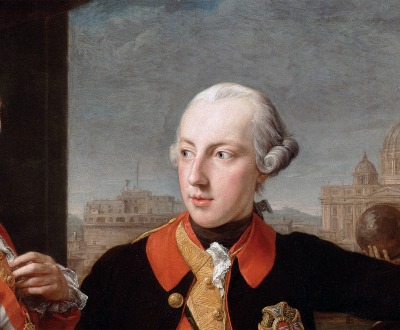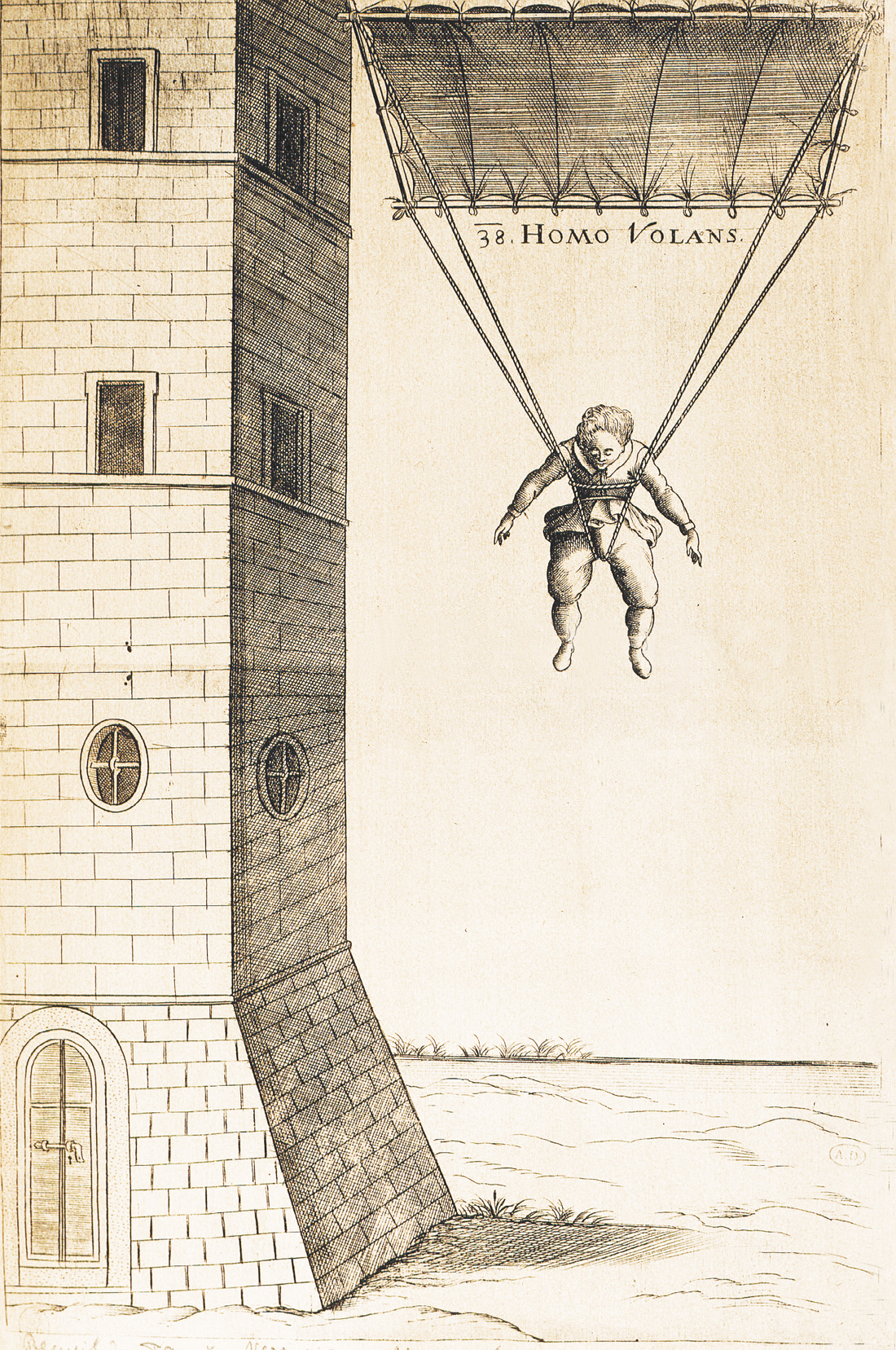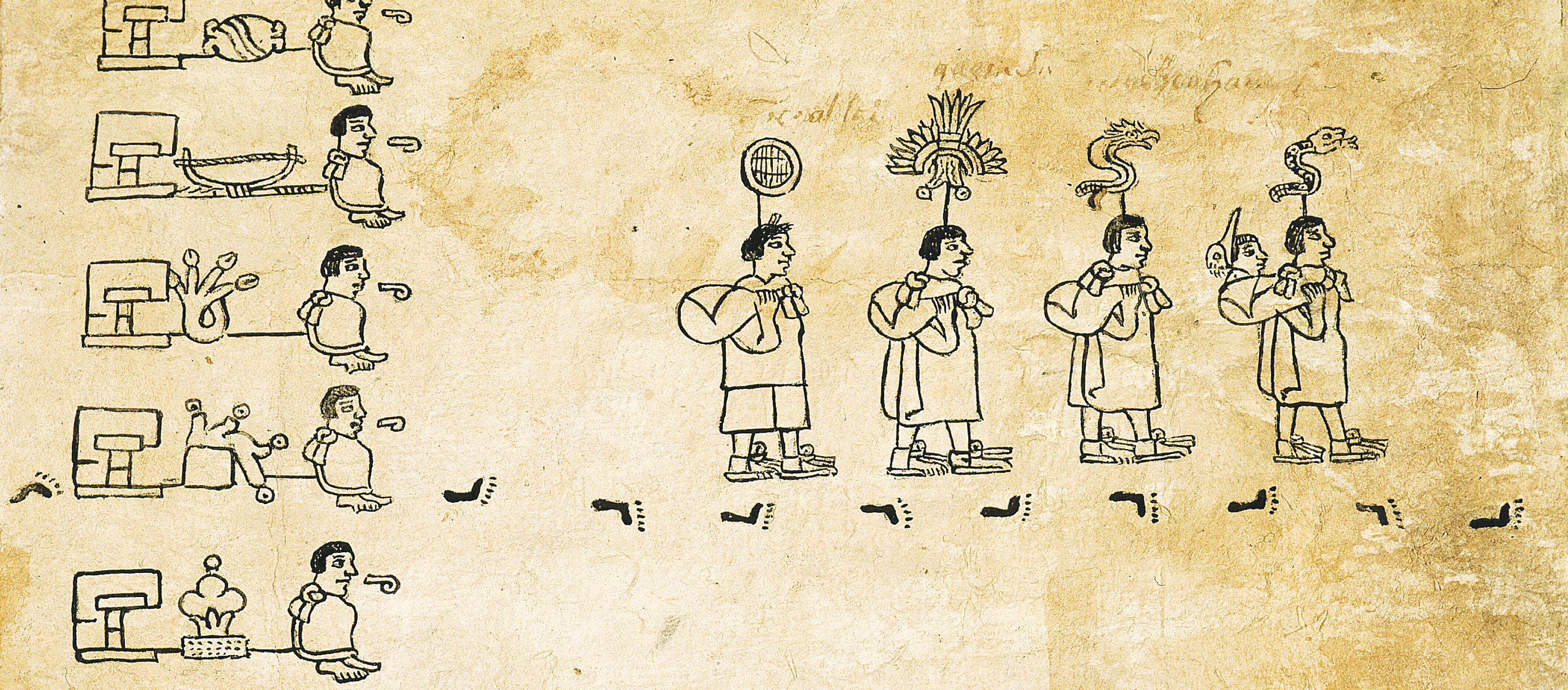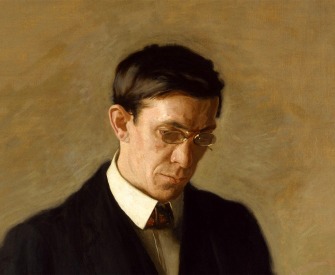Thanks to the interstate highway system, it is now possible to travel from coast to coast without seeing anything.
—Charles Kuralt, 1980Grand Tour
A look at the history of the Grand Tour, and at the travels of the imagination.
By Lewis H. Lapham

Emperor Joseph II with Grand Duke Pietro Leopoldo of Tuscany, by Pompeo Batoni, 1769. Kunsthistorisches Museum, Vienna, Austria.
The wise traveler travels only in imagination.
—W. Somerset Maugham
Although nobody handed me a sheet of instructions before boarding the plane to Lisbon with my younger brother in the summer of 1954, I understood that I was setting forth on the pilgrim road to an uplifted soul. Twenty years old and safely through my sophomore year at college, I’d paid close enough attention to the surveys of Western Civilization to know that the route map of “The Grand Tour” had been clearly marked both by the sons of eighteenth-century British dukes and the wives of nineteenth-century American railroad barons. The accommodations weren’t as gracious as in the days when Henry James sailed for England with steamer trunks and a silver tea service, or as richly appointed as when Horace Walpole at Rome in 1740 could say to a friend, “I would buy the Colosseum if I could,” but the itinerary hadn’t been much changed over the distance of two hundred years, and neither had its self-improving purpose. The sights were still there to be seen, and one was expected to take notes.
For three months I kept the obligatory journal, careful to observe the transience of empire in the dust of the Roman Forum, not failing to notice in Venice that the afternoon light had been painted by Tintoretto. The fierce gargoyles on the facade of Notre Dame brought to mind the grim consequence of Abélard’s ill-fated love for Héloïse; across the river at Les Deux Magots I ordered absinthe and wrote postcards in a style meant to be mistaken for that of F. Scott Fitzgerald. Nor did I neglect the guidebooks or miss attendance at the museums, but had I been given a test in advanced sensibility on my return to America in September, I would have fallen well short of the mark set by Goethe in Italy in 1786. He speaks of his first coming upon the ruins of antiquity as “my second natal day,” his rebirth in the presence of “vistas,” “gardens,” “triumphal arches,” “inscriptions,” and “coins,” prompting him to look back on his former ideas “as though they were children’s shoes.” My own observations were born again not from the raw footage of unedited experience but from tape-delayed sentiments filed by other travelers in other centuries. I was never sure whether I was looking at the Arno or the Rhine through the open window of time present, or whether I was looking at the Arno and the Rhine in the clouded mirror of time past, as they had been seen by Caesar’s legions or Napoleon’s horses. No matter how many times I climbed Rome’s Palatine Hill I wasn’t walking in new shoes, and if in the morning I had looked down on the Circus Maximus from the heights once commanded by the Emperors Nero and Domitian, by noon I was content to squander the rest of the day in a cafe on the Via Veneto in company with Boccaccio’s Decameron or The Pisan Cantos of Ezra Pound. When not sightseeing in the pages of an old book, I leafed through the vocabulary of a new language for the words to ask the young lady at a nearby table where did one go, per favore, to hear the sound of magic flutes.

Engraving of Croatian mathematician Faust Vrančić jumping from a tower with a parachute, Italy, 1617.
Fifty-five years later, the veils of print having been supplanted by the far more effective vanishing agent of film, Goethe’s Eternal City so often accessorized as the backdrop in a fashion shoot or the setting for Hollywood espionage, I don’t know how anybody manages to see the ceiling of the Sistine Chapel as if for the first time. Marshall McLuhan remarked on the difficulty in 1964, the year in which his Understanding Media brought with it the conclusion that the habit of mind associated with the rule of images destroys the civilization dependent upon the meaning of words, the new and newer technologies capable of arranging the world in such a way that nobody needs to go to the trouble of experiencing it. McLuhan expressed the thought in a chapter entitled “The Photograph: The Brothel-Without-Walls”:
Travel differs very little from going to a movie or turning the pages of a magazine… people… never arrive at any new place. They can have Shanghai or Berlin or Venice in a package tour that they need never open… Thus the world itself becomes a sort of museum of objects that we have encountered before in some other medium.
The point apparently has been missed by large numbers of people still buying passage to the islands of the blessed. Tourism over the last fifty years has become as big a business as the international drug trade (grand and grander magical mystery tours, handsomely packaged, digitally enhanced), but McLuhan’s notion of travel as a superfluous enterprise has been appropriated by the cognoscenti who shun the big-ticket destinations in favor of a line of march that leads through The Deserts of No Significance—to villages so remote that the inhabitants never have seen themselves on television, to towns where no famous artist ever lived, to city squares still awaiting the arrival of an important anecdote.
This refined sensibility I had thought a high-end product of the late twentieth century, and so I was surprised to hear it echoed in Touring in 1600 by E.S. Bates, a book that I came across eight years ago when asked to write a history of The Grand Tour for Condé Nast Traveler. The editors of the magazine were curious to know whence had come the itinerary that placed the chocolate on the pillows and the jewelers in the lobbies of Europe’s luxury hotels. Bates, an English scholar and antiquarian, published his book in 1912, culling travel notes from sixteenth- and seventeenth-century diarists whose lines of sight had not yet been corrupted “by reference books, telegraphy, and democracy.” The roads were dangerous, the inns wretched, the ships unseaworthy, the maps so bad as to be seen as “gifts rather to an enemy than to a friend,” the prudent wayfarer advised, “Never journey without something to eat in your pocket, if only to throw to dogs when attacked by them,” and if bringing a watch, to make sure that it was not a striker, “for that warns the wicked you have cash.” Not unlike Herodotus recording the strange sights to be seen in the fifth century bc, Bates delights in the scraps of intel apt to be of interest to the average tourist wandering around Europe in the Age of Discovery:
Criminals in Bavaria displayed to the public for several days prior to execution, nailed through their ears to posts. Foreigners chased through the streets of The Hague by small boys screaming insults at the strangeness of their costume. Butter impossible to come by in Germany but so plentiful in Poland that it is used to grease carriage wheels. Storks known to gather in cities where representative government flourished. Moscow conducive to drunkenness, the revelers in the habit of selling their clothes for drink and subsequently found lying naked in the snow, as dead and cold as frozen fish. The brutality of Hungarian soldiers most noticeable because they cut off the hands and feet of children, which they stuck in their hats in place of feathers.
Bates associates the coming of age of the English tourist with the rise of English drama, as well as with Britain’s need for an intelligence network on the late sixteenth-century continent of Europe, where, among militant Catholics in France and Spain, no consummation was more devoutly to be wished than the death of the Protestant Queen of England. To counter the threat, Elizabeth furnished money and the protection of the crown to those of her young courtiers, among them Edmund Spenser, Sir Philip Sidney, and possibly also Christopher Marlowe, willing to go abroad for two, three, or four years to take the measure of her enemies. The unincorporated systems of surveillance led to the organization of both a secret and a diplomatic service, and eventually to exploratory ventures in all directions, “to bring us,” so said Sir Francis Bacon in 1625, “the books and abstracts and patterns of experiments in all other parts,” to conduct the search “not for gold, silver, or jewels,” but to go as “merchants of light” trafficking in the commodities of the intellect.
If the earliest tourists went abroad to accumulate intellectual capital, their successors distributed the surplus deriving from its profitable employment, and during the course of the seventeenth and eighteenth centuries, what had been begun as a public-works project meant to enhance the power of the state came to be understood as a private speculation meant to adorn the life of the individual. British patrons of the arts ransacked the continent for Dutch and Italian paintings with which to furnish their London townhouses, for Greek and Roman sculpture with which to decorate their country gardens.
As time passed and the roads improved, The Grand Tour devolved into erotic picaresque. Noble peers entrusted their noble heirs to the guidance of “bear-leaders” (tutors bustling with sound advice and good intentions) and so sent them eastward out of England, as per the instructions of Lord Chesterfield to his son in 1748, to acquire the knowledge of a scholar and the manners of a courtier and to join “what is seldom joined in my countrymen, books and the world.” The parental wisdom tended to fall on stony ground, and well before arriving in Paris—often as soon as their carriages reached Calais—the young gentlemen usually managed to slip the leash of Latin proverbs and make good their escapes into the nearest brothel. Their diaries note the rates charged by the better class of bawd in Amsterdam and Toulouse, and their enthusiasms speak to their several degrees of separation from
Philip Thicknesse’s word to the wise about the “gins and mantraps” fixed all over the country of France by “wicked men and profligate, abandoned, and prostitute women,” determined to catch “every bird of passage—but particularly the English goldfinch.” Similar advisories appeared in the fast proliferating spate of printed guidebooks reminding the traveler in France to bring “an iron fastener to secure the bedroom door,” and “always to carry a letter to the British ambassador.” Abigail Adams seconded the motion in her letter home to Mercy Otis Warren in Puritan Massachusetts, confirming the need for precaution, because in Paris vice is “like a subtle poison, secretly penetrating and working destruction.”
The Americans adopted the program of The Grand Tour in the 1820s, endowing it with the character of a high-minded literary expedition. An advance guard of prominent authors, among them Washington Irving and James Fenimore Cooper, was followed to Europe by a procession of their faithful readers in search of all things venerable and exalted. Subscribing to the opinion of Nathaniel Hawthorne, who found in America “no shadow, no antiquity, no mystery, no picturesque and gloomy wrong,” the travelers embarked on what they hoped would prove to be a poem by Wordsworth or a novel by Sir Walter Scott. They looked for cultural authority and personal transformation, for the marks of social distinction and the intimations of immortality.
The timely invention of railroads and steamboats offered regularly scheduled visits to the antique atmospheres of “picturesque and gloomy wrong,” the European landscape soon so heavily annotated by effusive diarists scattering the stock phrases of exclamatory rapture that when Mark Twain in 1867 booked passage on the Quaker City for the voyage subsequently described in The Innocents Abroad, he remarked on “the happiness of being for once in my life drifting with the tide of a great popular movement…The steamship lines were carrying Americans out of the various ports of the country at the rate of four or five thousand a week, in the aggregate.”
The ship sailed, and before it was out of sight of land, the once-upon-a-time pilot of a Mississippi River steamboat was appalled to find himself in the company of earnest sightseers intent upon the projects of moral and spiritual self-help. The herd of complacently respectable opinions browsed among the postcard attractions of Italy and France, wandered briefly off to Tsarist Russia and the Holy Land, and Twain’s book evolved into a satire peopled with caricatures labeled “The Oracle” and “The Pilgrim.”
The publication of the book in 1869 secured Twain’s presence on the stage of American letters, but it did nothing to impede the export of the raw material of American innocence to the cultural refineries of Europe. The increased volume of trade encouraged a change in attitude. If during the early years of the century the American tourists approached an important statue with a feeling of diffidence and awe—as if somehow they might be proved unworthy of being introduced to so august a personage—by the end of the century they had acquired a self-confidence commensurate with the overbearing wealth of the country’s Gilded Age.
My great-grandfather was another of the young Americans who set forth on the Grand Tour in the 1870s, and the story of his adventure has been handed down through three generations with the reverence that other families reserve for the handling of the ancestral portraits and the colonial pewter. The eldest son of a prosperous leather merchant and raised as a devout Quaker, Lewis Henry Lapham graduated from Brooklyn Academy at the age of seventeen, and by way of a reward for his standing at the head of his class, his father presented him with the choice of attending an American college or going to Europe for four years with a bear-leader. Great-grandfather elected to tour the continent, and four years after he boarded a French ship at the foot of Fulton Street, smooth-shaven and wearing a black broadcloth coat, he reappeared on the same dock dressed as a Parisian dandy (Van Dyck beard, mauve gloves, silk waistcoat, yellow spats) fluent in five languages, proficient on the cello, and accompanied by a young woman on loan from a German corps de ballet. Much to his own astonishment, even more so to that of his father, he had taken to heart Lord Chesterfield’s maxim about joining an interest in books with a knowledge of the world. But his father was not a British earl, Brooklyn reminded nobody of the gardens at Kew, and right-thinking Quakers didn’t dance to the music of Mozart. The young lady was returned to Bremerhaven on the next available ship, and my great-grandfather, once again frock-coated and smooth-shaven, was remanded by train to Titusville, Pennsylvania, there to learn the art of tanning leather and the science of skinning cows.

Aztecs’ long march, from the Boturini Codex, c. 1540. National Museum of Anthropology, Mexico City, Mexico.
Failing to inherit either his sense of occasion or his gift for languages, I didn’t come away from my own introduction to Europe with equivalent badges of merit. I knew that I was on sacred literary ground—here is Hemingway’s Paris, there the Paris of Jefferson and Voltaire, somewhere behind the boulevard the Paris of Louis Napoleon and Flaubert—but as a tourist I was no match for my younger brother, who never failed to see every sight in the guidebook, checking them off—as he did later in life with his watching of birds—as a marvel duly noted and attested to on a postcard registering the time, date, and wind direction. I could count on him to bring the postcards to the cafe, where in the late afternoon I was to be found practicing how to say “magic flute” in French. Once or twice through the collection of postcards, with my brother adding the voice-over, and sometimes I could manage enough of an appearance of a well-informed ambassador of goodwill to secure the confidence of the young lady at a nearby table who otherwise was certain to mistake me for an English goldfinch.
If in the summer of 1954 my brother and I had seen what we were expected to see, moving the tokens of our appreciation around the Monopoly board of medieval palaces and Renaissance cathedrals, in the summer of 1955 I found work aboard a ship bringing iron ore from the Orinoco River in Venezuela to the steel mills in Pennsylvania, and under a new set of stars in the sky I learned the difference between a tourist and a traveler, what Henry Miller meant by his remark that, “one’s destination is never a place but a new way of seeing things.” As ship’s clerk on the voyages to South America I traveled as a merchant of light, required to bribe river pilots and customs officials with alcohol and tobacco, to compose letters intended to serve as testimony for the defense on behalf of crew members in trouble with women or the police, to stand the midwatch with the third mate and take instruction in the mathematics of celestial navigation. In the years since I’ve done a good deal of traveling—within the United States as well as in Europe and Asia—but nearly always with some sort of beast in view or purpose in mind, exchanging, as did
Melville’s Ishmael, the privileges of the idle passenger for the less splendid accommodation of a man paid for his troubles and therefore obliged to see something other than his own reflection in the pools of Narcissus at Tivoli and Versailles.
Billy Collins in his essay says that a poem’s “tendency to travel imaginatively and thus to carry the reader in the vehicle of its language” is what distinguishes it from other forms of literary expression. What Collins says of poetry also can be said of any and all forms of literary expression that carry a reader into landscapes—glimpsed in far-off snowy mountains or in a mirror on the nearest wall—heretofore unknown. What am I doing in a history of the Crusades or a novel of the Great Depression if not traveling in a foreign country? The writer who plants the ground of experience with the seed of the imagination fits his or her reader with a new pair of shoes, and if in this issue of Lapham’s Quarterly the sights are again seen as if for the first time—by Tabitha Brown on horseback or by Marcel Proust from a railroad carriage—it is because the vehicle of language makes them so.


